Daniel George
TRUSTED: The Paired 3D Transabdominal Ultrasound and CT Human Data for Kidney Segmentation and Registration Research
Oct 19, 2023Abstract:Inter-modal image registration (IMIR) and image segmentation with abdominal Ultrasound (US) data has many important clinical applications, including image-guided surgery, automatic organ measurement and robotic navigation. However, research is severely limited by the lack of public datasets. We propose TRUSTED (the Tridimensional Renal Ultra Sound TomodEnsitometrie Dataset), comprising paired transabdominal 3DUS and CT kidney images from 48 human patients (96 kidneys), including segmentation, and anatomical landmark annotations by two experienced radiographers. Inter-rater segmentation agreement was over 94 (Dice score), and gold-standard segmentations were generated using the STAPLE algorithm. Seven anatomical landmarks were annotated, important for IMIR systems development and evaluation. To validate the dataset's utility, 5 competitive Deep Learning models for automatic kidney segmentation were benchmarked, yielding average DICE scores from 83.2% to 89.1% for CT, and 61.9% to 79.4% for US images. Three IMIR methods were benchmarked, and Coherent Point Drift performed best with an average Target Registration Error of 4.53mm. The TRUSTED dataset may be used freely researchers to develop and validate new segmentation and IMIR methods.
Enabling real-time multi-messenger astrophysics discoveries with deep learning
Nov 26, 2019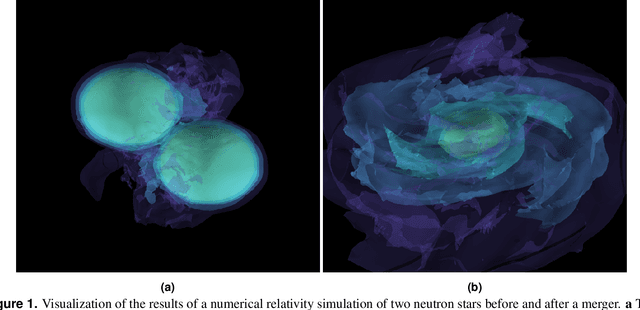
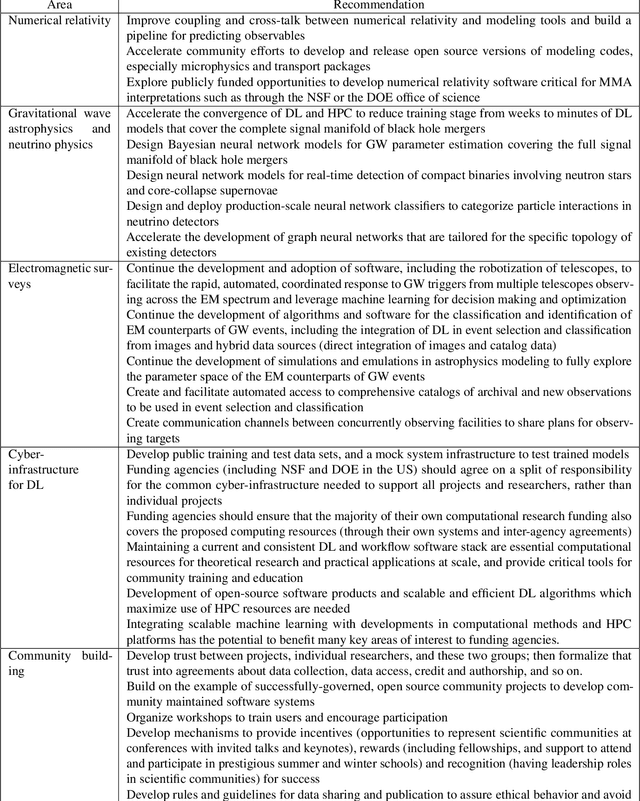
Abstract:Multi-messenger astrophysics is a fast-growing, interdisciplinary field that combines data, which vary in volume and speed of data processing, from many different instruments that probe the Universe using different cosmic messengers: electromagnetic waves, cosmic rays, gravitational waves and neutrinos. In this Expert Recommendation, we review the key challenges of real-time observations of gravitational wave sources and their electromagnetic and astroparticle counterparts, and make a number of recommendations to maximize their potential for scientific discovery. These recommendations refer to the design of scalable and computationally efficient machine learning algorithms; the cyber-infrastructure to numerically simulate astrophysical sources, and to process and interpret multi-messenger astrophysics data; the management of gravitational wave detections to trigger real-time alerts for electromagnetic and astroparticle follow-ups; a vision to harness future developments of machine learning and cyber-infrastructure resources to cope with the big-data requirements; and the need to build a community of experts to realize the goals of multi-messenger astrophysics.
* Invited Expert Recommendation for Nature Reviews Physics. The art work produced by E. A. Huerta and Shawn Rosofsky for this article was used by Carl Conway to design the cover of the October 2019 issue of Nature Reviews Physics
Denoising Gravitational Waves with Enhanced Deep Recurrent Denoising Auto-Encoders
Mar 06, 2019
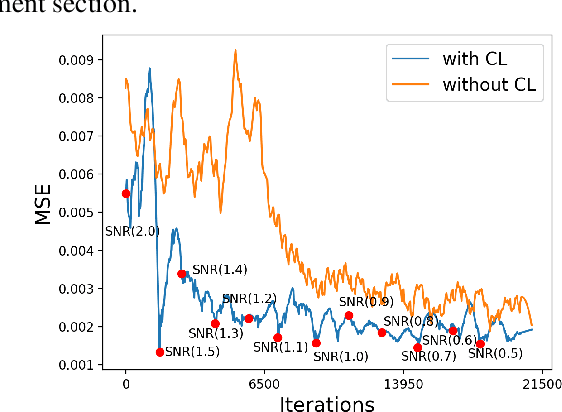

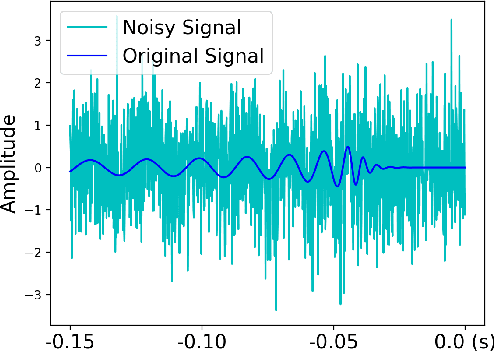
Abstract:Denoising of time domain data is a crucial task for many applications such as communication, translation, virtual assistants etc. For this task, a combination of a recurrent neural net (RNNs) with a Denoising Auto-Encoder (DAEs) has shown promising results. However, this combined model is challenged when operating with low signal-to-noise ratio (SNR) data embedded in non-Gaussian and non-stationary noise. To address this issue, we design a novel model, referred to as 'Enhanced Deep Recurrent Denoising Auto-Encoder' (EDRDAE), that incorporates a signal amplifier layer, and applies curriculum learning by first denoising high SNR signals, before gradually decreasing the SNR until the signals become noise dominated. We showcase the performance of EDRDAE using time-series data that describes gravitational waves embedded in very noisy backgrounds. In addition, we show that EDRDAE can accurately denoise signals whose topology is significantly more complex than those used for training, demonstrating that our model generalizes to new classes of gravitational waves that are beyond the scope of established denoising algorithms.
Deep Learning for Multi-Messenger Astrophysics: A Gateway for Discovery in the Big Data Era
Feb 01, 2019Abstract:This report provides an overview of recent work that harnesses the Big Data Revolution and Large Scale Computing to address grand computational challenges in Multi-Messenger Astrophysics, with a particular emphasis on real-time discovery campaigns. Acknowledging the transdisciplinary nature of Multi-Messenger Astrophysics, this document has been prepared by members of the physics, astronomy, computer science, data science, software and cyberinfrastructure communities who attended the NSF-, DOE- and NVIDIA-funded "Deep Learning for Multi-Messenger Astrophysics: Real-time Discovery at Scale" workshop, hosted at the National Center for Supercomputing Applications, October 17-19, 2018. Highlights of this report include unanimous agreement that it is critical to accelerate the development and deployment of novel, signal-processing algorithms that use the synergy between artificial intelligence (AI) and high performance computing to maximize the potential for scientific discovery with Multi-Messenger Astrophysics. We discuss key aspects to realize this endeavor, namely (i) the design and exploitation of scalable and computationally efficient AI algorithms for Multi-Messenger Astrophysics; (ii) cyberinfrastructure requirements to numerically simulate astrophysical sources, and to process and interpret Multi-Messenger Astrophysics data; (iii) management of gravitational wave detections and triggers to enable electromagnetic and astro-particle follow-ups; (iv) a vision to harness future developments of machine and deep learning and cyberinfrastructure resources to cope with the scale of discovery in the Big Data Era; (v) and the need to build a community that brings domain experts together with data scientists on equal footing to maximize and accelerate discovery in the nascent field of Multi-Messenger Astrophysics.
Real-time regression analysis with deep convolutional neural networks
May 07, 2018Abstract:We discuss the development of novel deep learning algorithms to enable real-time regression analysis for time series data. We showcase the application of this new method with a timely case study, and then discuss the applicability of this approach to tackle similar challenges across science domains.
Deep Learning for Real-time Gravitational Wave Detection and Parameter Estimation with LIGO Data
Dec 11, 2017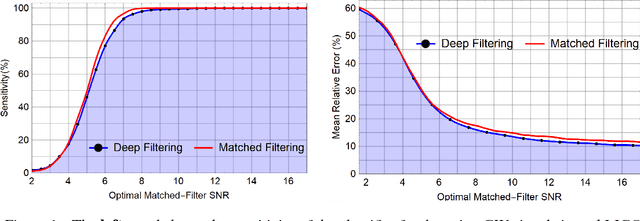
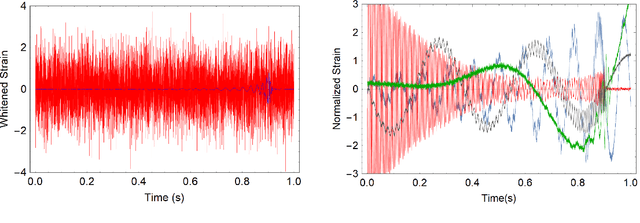
Abstract:The recent Nobel-prize-winning detections of gravitational waves from merging black holes and the subsequent detection of the collision of two neutron stars in coincidence with electromagnetic observations have inaugurated a new era of multimessenger astrophysics. To enhance the scope of this emergent science, we proposed the use of deep convolutional neural networks for the detection and characterization of gravitational wave signals in real-time. This method, Deep Filtering, was initially demonstrated using simulated LIGO noise. In this article, we present the extension of Deep Filtering using real data from the first observing run of LIGO, for both detection and parameter estimation of gravitational waves from binary black hole mergers with continuous data streams from multiple LIGO detectors. We show for the first time that machine learning can detect and estimate the true parameters of a real GW event observed by LIGO. Our comparisons show that Deep Filtering is far more computationally efficient than matched-filtering, while retaining similar sensitivity and lower errors, allowing real-time processing of weak time-series signals in non-stationary non-Gaussian noise, with minimal resources, and also enables the detection of new classes of gravitational wave sources that may go unnoticed with existing detection algorithms. This approach is uniquely suited to enable coincident detection campaigns of gravitational waves and their multimessenger counterparts in real-time.
Glitch Classification and Clustering for LIGO with Deep Transfer Learning
Dec 11, 2017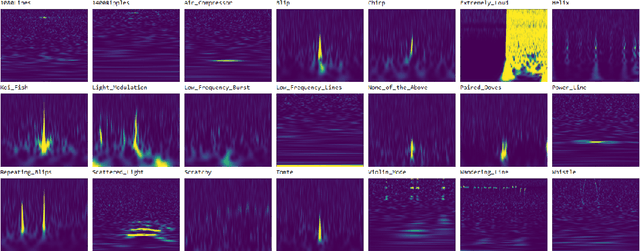

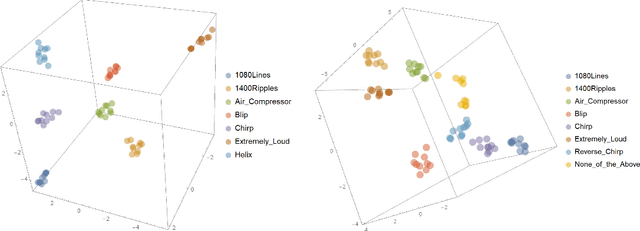
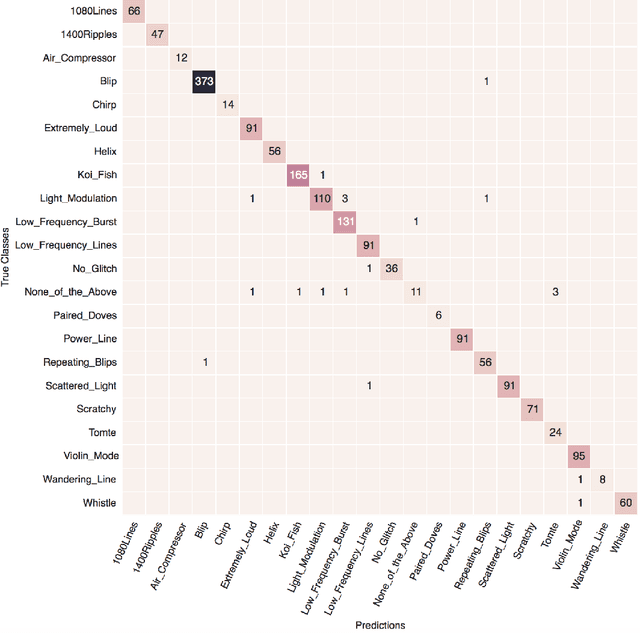
Abstract:The detection of gravitational waves with LIGO and Virgo requires a detailed understanding of the response of these instruments in the presence of environmental and instrumental noise. Of particular interest is the study of anomalous non-Gaussian noise transients known as glitches, since their high occurrence rate in LIGO/Virgo data can obscure or even mimic true gravitational wave signals. Therefore, successfully identifying and excising glitches is of utmost importance to detect and characterize gravitational waves. In this article, we present the first application of Deep Learning combined with Transfer Learning for glitch classification, using real data from LIGO's first discovery campaign labeled by Gravity Spy, showing that knowledge from pre-trained models for real-world object recognition can be transferred for classifying spectrograms of glitches. We demonstrate that this method enables the optimal use of very deep convolutional neural networks for glitch classification given small unbalanced training datasets, significantly reduces the training time, and achieves state-of-the-art accuracy above 98.8%. Once trained via transfer learning, we show that the networks can be truncated and used as feature extractors for unsupervised clustering to automatically group together new classes of glitches and anomalies. This novel capability is of critical importance to identify and remove new types of glitches which will occur as the LIGO/Virgo detectors gradually attain design sensitivity.
* Camera-ready (final) paper accepted to NIPS 2017 conference workshop on Deep Learning for Physical Sciences. Extended article: arXiv:1706.07446
Denoising Gravitational Waves using Deep Learning with Recurrent Denoising Autoencoders
Nov 27, 2017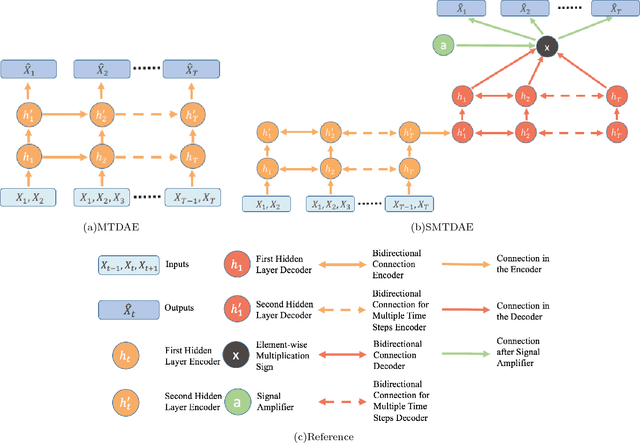
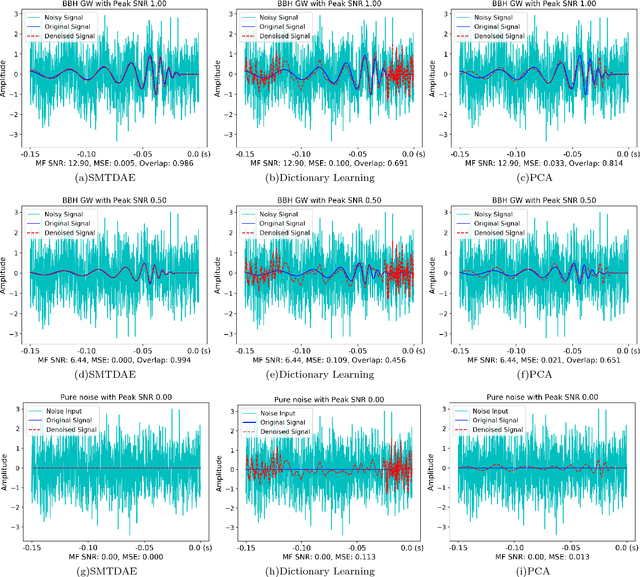
Abstract:Gravitational wave astronomy is a rapidly growing field of modern astrophysics, with observations being made frequently by the LIGO detectors. Gravitational wave signals are often extremely weak and the data from the detectors, such as LIGO, is contaminated with non-Gaussian and non-stationary noise, often containing transient disturbances which can obscure real signals. Traditional denoising methods, such as principal component analysis and dictionary learning, are not optimal for dealing with this non-Gaussian noise, especially for low signal-to-noise ratio gravitational wave signals. Furthermore, these methods are computationally expensive on large datasets. To overcome these issues, we apply state-of-the-art signal processing techniques, based on recent groundbreaking advancements in deep learning, to denoise gravitational wave signals embedded either in Gaussian noise or in real LIGO noise. We introduce SMTDAE, a Staired Multi-Timestep Denoising Autoencoder, based on sequence-to-sequence bi-directional Long-Short-Term-Memory recurrent neural networks. We demonstrate the advantages of using our unsupervised deep learning approach and show that, after training only using simulated Gaussian noise, SMTDAE achieves superior recovery performance for gravitational wave signals embedded in real non-Gaussian LIGO noise.
Deep Neural Networks to Enable Real-time Multimessenger Astrophysics
Nov 09, 2017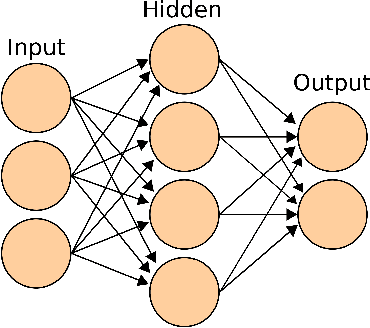


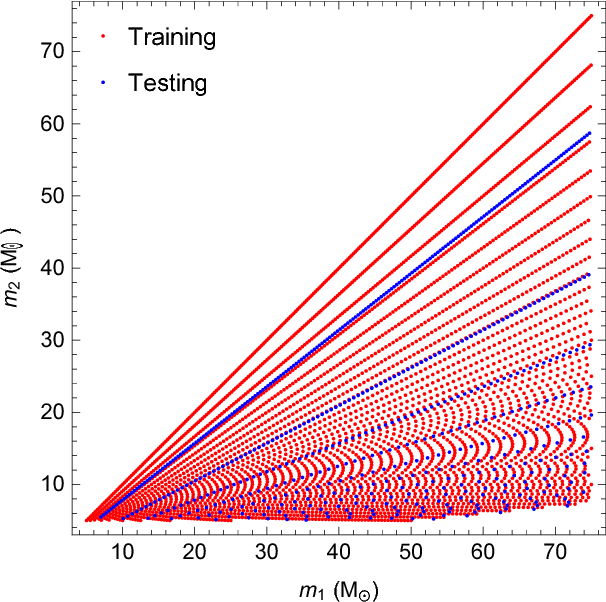
Abstract:Gravitational wave astronomy has set in motion a scientific revolution. To further enhance the science reach of this emergent field, there is a pressing need to increase the depth and speed of the gravitational wave algorithms that have enabled these groundbreaking discoveries. To contribute to this effort, we introduce Deep Filtering, a new highly scalable method for end-to-end time-series signal processing, based on a system of two deep convolutional neural networks, which we designed for classification and regression to rapidly detect and estimate parameters of signals in highly noisy time-series data streams. We demonstrate a novel training scheme with gradually increasing noise levels, and a transfer learning procedure between the two networks. We showcase the application of this method for the detection and parameter estimation of gravitational waves from binary black hole mergers. Our results indicate that Deep Filtering significantly outperforms conventional machine learning techniques, achieves similar performance compared to matched-filtering while being several orders of magnitude faster thus allowing real-time processing of raw big data with minimal resources. More importantly, Deep Filtering extends the range of gravitational wave signals that can be detected with ground-based gravitational wave detectors. This framework leverages recent advances in artificial intelligence algorithms and emerging hardware architectures, such as deep-learning-optimized GPUs, to facilitate real-time searches of gravitational wave sources and their electromagnetic and astro-particle counterparts.
* v3: Added results submitted to PRD on October 18, 2017; incorporated suggestions from the community
Deep Learning for Real-time Gravitational Wave Detection and Parameter Estimation: Results with Advanced LIGO Data
Nov 08, 2017
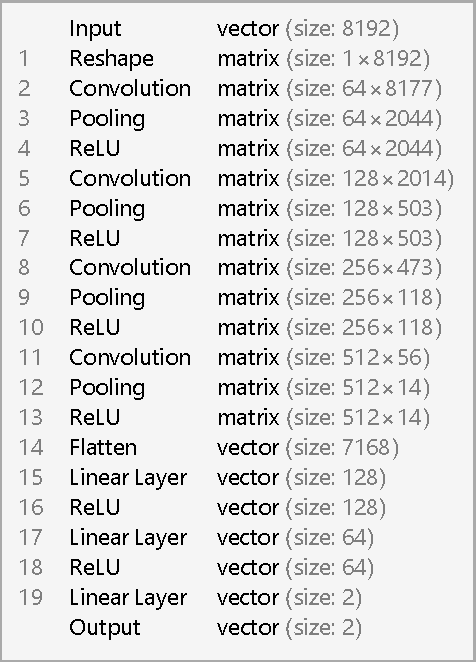


Abstract:The recent Nobel-prize-winning detections of gravitational waves from merging black holes and the subsequent detection of the collision of two neutron stars in coincidence with electromagnetic observations have inaugurated a new era of multimessenger astrophysics. To enhance the scope of this emergent field of science, we pioneered the use of deep learning with convolutional neural networks, that take time-series inputs, for rapid detection and characterization of gravitational wave signals. This approach, Deep Filtering, was initially demonstrated using simulated LIGO noise. In this article, we present the extension of Deep Filtering using real data from LIGO, for both detection and parameter estimation of gravitational waves from binary black hole mergers using continuous data streams from multiple LIGO detectors. We demonstrate for the first time that machine learning can detect and estimate the true parameters of real events observed by LIGO. Our results show that Deep Filtering achieves similar sensitivities and lower errors compared to matched-filtering while being far more computationally efficient and more resilient to glitches, allowing real-time processing of weak time-series signals in non-stationary non-Gaussian noise with minimal resources, and also enables the detection of new classes of gravitational wave sources that may go unnoticed with existing detection algorithms. This unified framework for data analysis is ideally suited to enable coincident detection campaigns of gravitational waves and their multimessenger counterparts in real-time.
* 6 pages, 7 figures; First application of deep learning to real LIGO events; Includes direct comparison against matched-filtering
 Add to Chrome
Add to Chrome Add to Firefox
Add to Firefox Add to Edge
Add to Edge